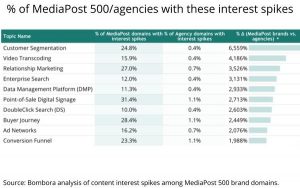Tracking outbound link clicks can give you some great insight into the user behavior of your website. Your website probably has internal links on your web pages to help users explore your website.
You also might have outbound links that bring users to other websites. These links might include external resources that you want to reference so you can come across as a valuable resource yourself.
Your website might have links to payment portals or other kinds of websites. Whatever the case may be, you can track outbound link clicks using Google Tag Manager with Google Analytics.
Google Tag Manager is a great tool you can use to deploy tracking for a number of user actions, including file downloads and scroll tracking, without developer support.
WHY USE GOOGLE TAG MANAGER
Not only does Google Tag Manager save you from bugging developers to implement tracking, it makes it easy to track a lot of user actions on your website like outbound link clicks.
There are a few ways you can easily track outbound link clicks. Google Tag Manager actually provides you with a built-in variable that you can use specifically for outbound link tracking. You can configure an auto-event variable to check if clicks on links are outbound.
If you want to exclude affiliated websites, for example, a subdomain or another website in your ecosystem of your digital presence, you can easily add an exclusion list.
Not to mention, Google Tag Manager also allows you to test the tracking yourself.
OUTBOUND LINK TRACKING EXAMPLES
Some web pages on this website might include outbound links to the Growth Learner YouTube channel, to social media channels, or other web properties in the Growth Learner ecosystem.
For example, if one of the website goals is to drive traffic to the YouTube channel, a goal could be created using the outbound link event specifically to the YouTube channel.
Another website that uses many outbound links is USA.gov. It’s a government website that guides visitors to government information, resources, and services.
By looking at the homepage above the fold, you can tell they probably have a number of outbound links to other government websites.
![]()
USA.gov website
The web page with information on applying for renewing passports probably includes an outbound link to state.gov. The web pages for tax refund and stimulus check status probably include an outbound link to IRS.gov.
USING OUTBOUND LINK CLICK DATA
Depending on what the outbound links are and how close they align to the goals of the website, a goal may be created based on the user clicking on that outbound link. Just like the example with the Growth Learner YouTube channel.
For content sites like USA.gov, outbound links may serve an important purpose to the website. If a user lands on a page whose sole purpose is to provide outbound links to the correct resource, tracking these outbound link clicks will prove quite valuable.
Tracking outbound link clicks can provide you great insight into how successful your web pages are. You can use this data to improve the experience and the value that you provide to your visitors.
This article originally appeared on Growth Learner and has been republished with permission.
Digital & Social Articles on Business 2 Community
(11)





